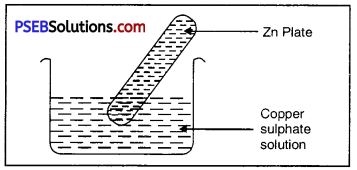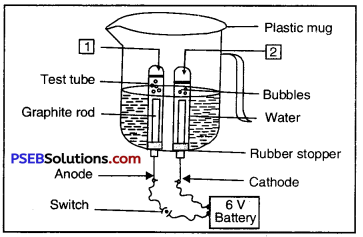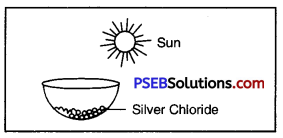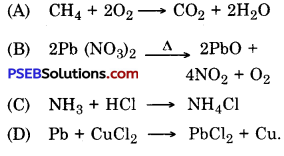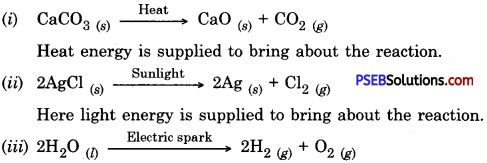Punjab State Board PSEB 10th Class Social Science Book Solutions History Chapter 6 Banda Bahadur and the Sikh Misals Textbook Exercise Questions and Answers.
PSEB Solutions for Class 10 Social Science History Chapter 6 Banda Bahadur and the Sikh Misals
SST Guide for Class 10 PSEB Banda Bahadur and the Sikh Misals Textbook Questions and Answers
Answer the following questions in 20-25 words:
Question 1.
What were the orders given by Guru Ji to the Sikhs of Punjab in his Hukamnama?
Answer:
Guru Gobind Singh Ji instructed the Sikhs of Punjab in his Hukamnama to consider Banda Bahadur as their leader in their struggle against the Mughals.
Question 2.
Why did Banda Bahadur come to Punjab from the South?
Answer:
Guru Gobind Singh Ji had appointed Banda Bahadur as the leader of the Sikhs in Punjab. Hence, he came to Punjab from Deccan to undertake military action against the tyrannical Mughals.
Question 3.
Why did Banda Bahadur attack Samana?
Answer:
Sayyid Jalaludin, the executioner of Guru Tegh Bahadur Ji, lived in Samana. The other two executioners of two young Sahibzadas, namely, Jalad Shasal Beg and Jalad Bhagal Beg were also inhabitants of Samana. Due to this reason, Banda Bahadur attacked Samana.
Question 4.
What was the reason for attacking Bhuna village by Banda Bahadur?
Answer:
A contingent of Mughal soldiers guarding a Mughal treasury was camping at village Bhuna. Banda Bahadur needed money for his military campaigns. Hence, he attacked the village Bhuna.
![]()
Question 5.
Why did Banda Bahadur attack Sadhaura?
Answer:
Banda Bahadur attacked Sadhaura to punish its ruler Usman Khan. Usman Khan was notorious for commiting atrocities on the Hindus. Usman Khan had also killed Buddhu Shah for having supported Guru Gobind Singh Ji in the battle of Bhangani.
Question 6.
Why did Banda Bahadur attack Chapparchiri and Sirhind?
Or
What was the reason for attacking Sirhind by Banda Bahadur?
Answer:
The Subedar of Sirhind, Wazir Khan had troubled Guru Gobind Singh Ji throughout his stay in the Punjab. He had also bricked alive the two young Sahibzadas in a wall at Sirhind. That was why Banda Bahadur attacked Sirhind and Chapparchiri.
Question 7.
What was the cause of the battle of Rahon?
Answer:
The Sikhs of Jalandhar Doab had risen in arms against Faujdar Shamas Khan. The Sikhs had removed the Mughal officers by force and replaced them by Sikh officers. As a result, the battle of Rahon was fought between the Sikhs and the Mughals.
Question 8.
Wazir Khan was the Subedar of which place? Where did he fight against Banda Bahadur?
Answer:
Wazir Khan was appointed as the Subedar of Sirhind by the Mughals. He fought a battle with Banda Bahadur at Chapparchirri.
Question 9.
Write about the martyrdom of Banda Bahadur.
Answer:
Banda Bahadur was arrested along with about one thousand Sikh soldiers in 1715 and taken to Delhi. There, the Mughal tormentors plucked out his flesh with hot iron rods. In this manner, Banda Bahadur was martyred.
Question 10.
When and between whom third battle of Panipat fought?
Answer:
Third battle of Panipat was fought in 1761 between Ahmad Shah Abdali and Marathas. ,
Question 11.
How was the Karorsinghia Misl named?
Answer:
The founder of Karorsinghia Misl was Karor Singh. His Misl was named as Karorsinghia Misl after his name.
![]()
Question 12.
Who was Sada Kaur?
Answer:
Sada Kaur was the mother-in-law of Maharaja Ranjit Singh. She belonged to the Kanhaiya Misl. She was a woman of extraordinary courage and ability.
Answer the following questions in 30-50 words:
Question 1.
Describe the meeting of Banda Bahadur and Guru Gobind Singh Ji.
Answer:
The original name of Banda Bahadur was Madho Dass. His childhood name was Lakshman Dass. He was a Bairagi. In 1708, Guru Gobind Singh Ji visited South India. There, Madho Dass happened to meet’Guru Gobind Singh Ji. He was so much impressed by the graceful personality of Guru Sahib that he immediately adopted Guru Sahib as his Guru. Guru Sahib baptized him a Sikh and renamed him Gurbaksh Singh. Guru Sahib sent him to the Punjab* to lead the Sikhs. He became popular as Banda Bahadur in Punjab.
Question 2.
Write a note on the conquest of Samana by Banda Bahadur.
Answer:
Banda Bahadur attacked Samana on October 26, 1709. The cause of the attack on Samana was that the executioner who had martyred Guru Teg Bahadur Ji and bricked the two young Sahibzadas in a wall at Sirhind belonged to Samana. The fight continued in the streets of Samana for many hours. It is said that the Sikhs killed nearly ten thousand Muslims. They also razed to the ground numerous buildings. The families of the executioners were completely liquidated. Banda Bahadur looted a large amount of money from Samana.
Question 3.
Write about the battle of Chapparchiri (Sirhind).
Answer:
The Subedar of Sirhind Wazir Khan had troubled Guru Gobind Singh Ji throughout his stay in Punjab. Secondly, the two young Sahibzadas were bricked alive in a wall on his orders. Banda Bahadur determined to avenge the heinous crimes committed by Wazir Khan. When Banda Bahadur marched towards Sirhind, many people rallied under his flag. A nephew of Sucha Nand, who was an employee of Sirhind administration, also joined the invading Sikh army along with his thousand soldiers. However, later he deserted the Sikh army. On the other side, Wazir Khan had twenty thousand soldiers at his disposal. On May 22, 1710, a fierce battle took place at Chapparchirri, a place 16 kilometres away from Sirhind. Wazir Khan was slain in the battle. The enemy army became the victim of the swords of Sikhs in large numbers. The dead body of Wazir Khan was hanged from a tree. The nose of Sucha Nand was pierced and he was paraded in the town.
![]()
Question 4.
Describe the battle of Gurdas Nangal.
Answer:
The Mughals were highly infuriated by the continuous victories of Banda Bahadur. Finally, in 1715, a large Mughal army attacked Banda’s army. Abdus Samad Khan was in command of that army. The Sikhs fought the Mughal army doggedly. However, they were forced to move to Haveli of Duni Chand at Gurdas Nangal, a place 6 kilometres west of Gurdaspur City. They again entrenched themselves in the mansion (haveli) of Bhai Duni Chand. In order to strengthen the defence of the Haveli, they dug out a moat around the building and filled it with water. In April 1715, the Mughal army landed near the haveli of Duni Chand and besieged it. The Sikhs put up a stiff resistance. The siege continued for eight months during which all the food supplies within the haveli were finished. Thus, compelled by the circumstances, the Sikhs accepted the defeat. Banda Bahadur and his about 1000 soldiers were arrested and taken to Lahore.
Question 5.
Which was the First Misl? Describe it.
Answer:
The Faizalpuria Misl was the first Misl which came into existence. The founder of this Misl was Nawab Kapur Singh. He had first occupied a village Faizalpur near Amritsar and named it Singhpur. It was, therefore, also called the Singpuria Misl.
In 1753, Nawab Kapur Singh died and his nephew Khushal Singh became the chief of the Faizalpuria Misl. By that time, the influence and dominance of the Sikhs had increased and Faizalpuria Misl extended its sway over a wide area. In 1796, Buddh Singh, son of Khushal Singh, became the chief of the Faizalpuria Misl. He was a brave and capable chief just like his father. In 1819, Maharaja Ranjit Singh annexecFFaizalpuria Misl to his kingdom.
Answer the following questions in 100-120 words:
Question 1.
Describe the early conquests of Banda Bahadur.
Answer:
Banda Bahadur was a great military commander of his times. The strongest weapons of Banda Bahadur were his intrepidity and the blessings of Guru Gobind Singh Ji. He had come to Delhi on the instructions of Guru Sahib. He sent the Hukamnama of Guru Gobind Singh Ji to the Sikhs of Malwa, Doaba and Majha. Soon after, thousands of Sikhs rallied under his flag. After organising the army with the help of those Sikhs, Banda Bahadur marched towards Punjab to take military action against the tyranny and oppression of the Mughals.
1. Attack on Sonipat. After leaving Delhi for Punjab, he first attacked Sonipat. At that time, only 500 Sikhs had joined him. However, the Faujdar of Sonipat had no courage to face the Sikh army on learning about the stories of their valour. He ran away from the town along with his soldiers.
2. Looting of Royal treasury at Bhuna (Kaithal). After Sonepat, Banda Bahadur reached Kaithal. He received a report that some soldiers were camping at a nearby village Bhuna with the land revenue collections. Banda Bahadur, who was in need of money for his military campaigns, attacked village Bhuna. The Faujdar of Kaithal came forward to fight a battle with him but was badly defeated. Banda Bahadur acquired all the money.
3. Victory of Samana. After Bhuna, Banda Bahadur marched towards Samana. Sayyid Jalaludin, the executioner of Guru Teg Bahadur, lived there. The executioners of two young Sahibzadas, (Sahibzadas Zorawar Singh and Fateh Singh) namely, Jalad Shasal Beg and Baghal Beg were also inhabitants of Samana. Banda Bahadur attacked Samana on November 26, 1709 and punished them. The fight continued for many hours in the streets of Samana. The Sikh soldiers razed to the ground the imposing buildings of Samana and put nearly ten thousand Muslims to sword. The families of Sayyid Jalaludin, Shasal Beg and Baghal Beg were killed. Banda Bahadur acquired a large booty during the attack. He appointed Bhai Fateh Singh as the administrator of Samana.
4. Victory of Ghurram. One week after the victory of Samana, Banda Bahadur attacked Ghurram. The Pathans of Ghurram offered resistance to the Sikh army. However, they saved their lives by running away. The Sikh army looted a lot of money from Ghurram.
5. Attack on Kapuri. From Ghurram, Banda Bahadur reached Kapuri. The ruler of Kapuri, Qutbudirt was notorious for inflicting atrocities on the Hindus. Banda Bahadur defeated him and put him to death! Banda Bahadur burned down his haveli.
6. Victory of Sadhaura (Qatalgarhi). The ruler of Sadhaura, Usman Khan, was notorious for committing atrocities on the Hindus. He had killed Buddhu Shah for having supported Guru Gobind Singh Ji in the victory of Bhangani. Banda Bahadur attacked Sadhora. After defeating Usman Khan, the Sikhs ravaged Sadhora,, town. Some of the Muslims took shelter in the haveli of Buddhu Shah. The Sikh army chopped off their heads. As a result, the place came to be ’known as Quatalgarhi.
7. Victory of Mukhalispur. After Sadhora, Banda Bahadur invaded Mukhalispur and easily occupied it. He changed the name of the fort to Lohgarh. Later, Banda Bahadur made Lohgarh as his capital.
8. Victory of Chapparchirri and Sirhind: The main target of the military expedition of Banda Bahadur was Sirhind where Subedar Wazir Khan lived, who had troubled Guru Gobind Singh Ji throughout his stay in the Punjab and afterwards also. He was also responsible for the martyrdom of two young Sahibzadas. That was why Banda Bahadur wanted to take revenge upon him. When Banda Bahadur approached Sirhind, thousands of Sikhs rallied under his flag. A nephew of Sucha Nand, an employee of Sirhind administration, also joined the invading Sikh army with his one thousand soldiers. Wazir Khan also came forward with his 2000 soldiers. A fierce battle was fought at Chapparchirri (near Sirhind) on 22 May, 1710 A.D. between the two armies. However, some of the Sikhs indulged in looting only and deserted the army during the course of the battle. The nephew of Sucha Nand also ran away from the field. At such a crucial juncture, Banda Bahadur charged forward and encouraged the loyal Sikhs. Finally, he killed Wazir Khan. A large number of Mughal soldiers were slain by the Sikhs. The dead body of Wazir Khan was hanged from a tree. The nose of Sucha Nand was pierced and he was paraded in the town.
9. Attack on Saharanpur and Jalalabad: In the meantime, Banda Bahadur got report that Jalal Khan, the governor of Jalalabad, was committing atrocities on his Hindu subjects. Therefore, he invaded Jalalabad. On his way, he occupied Saharanpur also. However, Banda Bahadur returned without conquering Jalalabad because of heavy rains and he had received an urgent message from the Sikhs of Jalandhar Doab to come to their help.
10. Control over Jalandhar Doab: The continuous victories of Banda Bahadur had infused a new spirit of courage among the Sikhs of Jalandhar Doab. The Sikhs of Jalandhar Doab had risen in revolt against the Faujdar Shams Khan. Shams Khan sent a huge army against the Sikhs after declaring Jihad. Banda Bahadur arrived at the right time to assist the Sikhs in their revolt. A fierce battle took place between the Sikhs and Muslims at Rahon. The Sikhs emerged victorious. In this way, the regions of Jalandhar and Hoshiarpur came under the control of the Sikhs.
11. Control over Amritsar, Batala, Kalanaur and Pathankot: Encouraged by the victories of Bapda Bahadur, nearly 8000 Sikhs revolted against their Muslim rulers. Soon they took in their possession the region of Amritsar, Batala, Kalanaur and Pathankot.
![]()
Question 2.
Describe the battles between Bahadur Shah and Banda Bahadur.
Answer:
Banda Bahadur spread awe and fear amoag the Mughal rulers of Punjab. When the Mughal Emperor received the report about actual condition in the Punjab, he got infuriated. The emperor, therefore, directed all his attention towards Punjab. On June 27, 1710, he left Ajmer for Punjab.
The emperor also directed the Subedars of Delhi, Avadh, and Nizams and Faujdars of Muradabad and Allahabad to come along with their armies to Punjab.
1. Battle of Eminabad: Bahadur Shah, Feroze Khan Mewati and Mahabat Khan in command of a large army marched against Banda Bahadur and his Sikh army. Bhai Binod Singh and Ram Singh engaged the Mughal army in a battle on October 26, 1710 at Eminabad, a place between Banesar and Tarawari. At one time, the Sikh army pushed back Mahabat Khan. But as the number of Mughal soldiers was quite large, the Sikhs were defeated. The Sikhs were highly insulted. The dead bodies of the Sikhs were hanged on the trees on the roadsides. Bahadur Shah appointed Feroze Khan Mewati as the Faujdar of Sirhind.
2. Battle of Sadhaura: When Banda Bahadur learnt about the defeat of Sikh army, he immediately marched against the enemy. At that time, the Mughal army was camping at Sadhaura. The Mughal army was trying to seek some better place for camping. On December 4, 1710 a Mughal contingent left Sadhaura. Banda Bahadur exploited the opportunity to attack the remaining army at Sadhaura. He inflicted heavy losses on the Mughals. However, by the evening, the search party of the Mughal army returned. As a result, the Sikh army was forced to discontinue the attack and move back to the fort of Lohgarh.
3. Battle of Lohgarh: By this time, Mughal Emperor Bahadur Shah himself took over the command to act against Banda Bahadur. He directed his commander Munim Khan to move towards the fort of Lohgarh with an order to gauge the actual strength of the Sikh army. Munim Khan overstepped the instructions of the Emperor and attacked Lohgarh on December 10, 1710 A.D. The other Mughal commanders were forced to join him in this expedition. The Sikhs gave them a tough fight. However, the Sikhs faced hardships because of the scarcity of the provisions. They were not fully prepared to fight a battle. In such a situation, one of the Sikhs, namely Gulab Singh wore the dress of Banda Bahadur and took over the command of the fort in place of Banda Bahadur. It helped Banda Bahadur to leave Lohgarh safely and he reached Nahan along with his Sikhs on December 11, 1710. Munim Khan stormed the fort of Lohgarh and captured it. Gulab Singh was killed. However, Bahadur Shah felt frustrated when he found that he was not able to capture Banda Bahadur. Hence, the Emperor sent his army under Hamid Khan after Banda Bahadur towards Nahan. The Emperor himself marched through Sadhaura, Badowal, Ropar, Hoshiarpur, Kalanaur, etc. and reached Lahpre.
4. The activities of Banda Bahadur in the Hilly Regions: Banda Bahadur sent a message to the Sikhs living in the hilly regions to join him. Very soon, a large number of Sikhs gathered at Kiratpur.
- First of all, Banda Bahadur issued a directive ^o the old enemy of Guru Gobind Singh Ji, named Bhim Chand of Bilaspur to accept his suzerainty. When Bhim Chand refused to follow his command, Banda Bahadur attacked Bilaspur. A fierce battle took place. Bhim Chand and his 1300 soldiers were killed in the battle. It was one of the glorious victories of the Sikhs.
- The rest of the hilly chiefs were terrified by the victory of Banda Bahadur. Some of them even presented gifts and recognised his suzerainty. Raja Siddha Sen of Mandi even openly announced that he was a follower of the Sikh Gurus.
- From Mandi, Banda Bahadur marched towards Kullu. The ruler of Kullu, Raja Man Singh was able to trap Banda Bahadur by a trick. However, Banda Bahadur soon set himself free.
- From Kullu, Banda Bahadur marched towards the kingdom of Chamba. The Raja of Chamba, Raja Udai Singh welcomed him and even married a girl from his family to Banda Bahadur. A son was born to Banda Bahadur in 1711, who was named Ajay Singh.
- Battle of Baihrampur: Next, Banda Bahadur marched from the hills of Raipur and Baihrampur and came down to the plains. There, he was again attacked by Faujdar of Jammu, Baizd Khan Khaishgi. A battle was fought on June 4, 1711, near Baihrampur. Bhai Bhag Singh and Bhai Fateh Singh displayed their skills with great courage and won the battle for the Sikhs.
After the victory of Baihrampur, Banda Bahadur attacked Raipur, Kalanaur, and Batala and occupied those towns. But, he soon lost those territories. Banda Bahadur again took shelter in the mountains. But Bahadur Shah and his army failed to destroy Banda Bahadur’s power and the Sikh army.
Question 3.
Describe the battles fought by Banda Bahadur in the Ganga-Yamuna region.
Answer:
A wave of enthusiasm spread among the common people because of continuous victories won by Banda Bahadur. The people became hopeful that Banda Bahadur would free them from the tyranny of the Mughals. So many Hindus and Muslims started embracing Sikh religion. The inhabitants of Muslim villages like Unarasa were converted to Sikh religion.
The Faujdar of Jalalabad did not tolerate it. He imprisoned many Sikhs of that village. Banda Bahadur, on getting this report, set out towards Unarasa to get the Sikhs released.
1. Attack on Saharanpur: The Sikhs attacked Saharanpur after crossing the river Yamuna. The Faujdar of Saharanpur ran away to Delhi on the arrival of Sikhs. His subordinates tried to resist the attacks of the Sikhs but were badly defeated. The Sikh army occupied a major portion of Saharanpur. They changed the name of Saharanpur to Bhagnagar.
2. Battle of Bihat: After Saharanpur, Banda Bahadur marched towards Bihat. The Pirzadas of Bihat were commiting atrocities on the Hindus. They used to slaughter cows at public places. Banda Bahadur put many Pirzadas to sword. It is said that only one Pirzada escaped the sword of Banda Bahadur because at that time he was away to Bulandshahr.
3. Attack on Ambeta: After Bihat, Banda Bahadur attacked Ambeta. The Afghans (Pathans) of Ambeta were very rich. They did not oppose the Sikh army. The Sikh army acquired a lot of money from them.
4. Attack on Nanota: The Sikhs attacked Nanota on July 21,1710. The Sheikhzadas of Nanota were experts in archery. They gave a tough fight to the Sikh army. The fight spread over to the streets and market of the town. Finally, the Sikh army won the victory and three hundred Sheikhzadas were killed.
5. Attack on Unarasa: After the victory of Nanota, Banda Bahadur turned to Jalalabad and Unarasa, which were his main targets. Banda Bahadur sent the message through his representative to Jalal Khan to ask him to immediately release the imprisoned Sikhs and quietly accept the suzerainty of Banda Bahadur. Jalal Khan refused to accept the orders of Banda Bahadur. He even insulted the representative of Banda Bahadur. Banda Bahadur now stormed Unarasa. A fierce battle took place and the Sikhs won it. Jalal Khan and his nephews Jamal Khan and Pir Khan were killed.
![]()
Activity:
Question 1.
Show the places of battles fought by Bandu BaIiadurIhempofPunjab.
Answer:
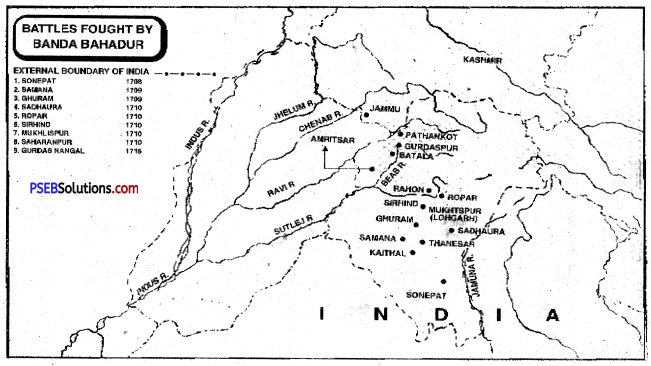
PSEB 10th Class Social Science Guide Banda Bahadur and the Sikh Misals Important Questions and Answers
Answer the following questions in one line or one word:
Question 1.
What did Madho Dass call himself after conifng under the influence of Guru Gobind Singh Ji?
Answer:
Madho Dass called himself a Dass (a humble servent) or Banda (a reliable follower of Guru Sahib).
Question 2.
Write one important victory won by the Sikhs under the leadership of Banda Bahadur.
Answer:
Victory of Sirhind.
Question 3.
Why did the Sikhs lose the battle of Gurdas Nangal?
Answer:
The Sikhs ran short of food supplies during the long siege of haveli of Bhai Duni Chand.
Question 4.
Write one important feature of the victories of Banda Bahadur.
Answer:
The victories of Banda Bahadur united the Sikhs in the bond of unity and showed them the path of independence.
Question 5.
Write any one cause of the failure of Banda Bahadur in establishing a more permanent rule of the Sikhs in Punjab.
Answer:
(1) Banda Bahadur had become unpopular among the Sikhs.
Question 6.
In which two groups (Dais) did Nawab Kapur Singh divide the Khalsa soldiers in 1734?
Answer:
In 1734, Nawab Kapur Singh divided the Sikh soldiers into two groups, Buddha Dal and Tarun Dal.
![]()
Question 7.
What is the meaning of the word Misl?
Or
How did the word Misl originate?
Answer:
The Misl is an Arabic word, which means all are equals.
Question 8.
How many Sikh Misls were there?
Answer:
There were twelve Sikh Misls in the Punjab.
Question 9.
Write the name of the founder of the Ahluwalia Misl.
Answer:
Jassa Singh Ahluwalia.
Question 10.
Which Misl was founded by Sardar Charhat Singh?
Answer:
Sukherchakia.
Question 11.
Who was the founder of Karorsinghia Misl?
Answer:
Karor Singh.
Question 12.
When and where Banda was executed by the Mughal ruler?
Answer:
In June 1716 at Delhi.
Question 13.
Who was Wazir Khan?
Answer:
Governor of Sirhind.
Question 14.
What was the name of Banda Bahadur’s son?
Answer:
Ajay Singh.
Question 15.
Who was the founder of the Phulkian Misl?
Answer:
Chaudhri Phul Singh, a Sandhu Jat.
![]()
Question 16.
Who was the most powerful ruler of the Phulkian Misl?
Answer:
Baba Ala Singh.
Fill in the blanks:
Question 1.
Guru Gobind Singh Ji sent Banda Bahadur to the _________ to lead the Sikhs in their struggle against the ___________
Answer:
Punjab, Mughals
Question 2.
The third Battle of Panipat was fought in between the _________ and_________
Answer:
1761, Marathas and Ahmed Shah Abdali
Question 3.
Jasa Singh Ahluwalia was the founder of the ________ Misl.
Answer:
Ahluwalia
Question 4.
Banda Bahadur attacked Sirhind and Chapparchiri to punish the Subedar of
Answer:
Wazir Khan, Sirhind
![]()
Question 5.
The Phulkian Misl was founded by Chaudhri
Answer:
Phul Singh.
True or False:
Question 1.
Banda was defeated in his battle with Wazir Khan, Subedar of Sirhind.
Answer:
False
Question 2.
Banda was executed at Lahore.
Answer:
False
Question 3.
There were twelve Sikh Misls in the Punjab.
Answer:
True
Question 4.
The original name of Banda Bahadur was Madho Das.
Answer:
True
![]()
Question 5.
The Sukherchakya Misl was founded by Sardar Charat Singh.
Answer:
True
Question 6.
A long dark period in the Sikh history followed the martyrdom of Banda Bahadur.
Answer:
True
Match the following:
Question 1.
|
(A) |
(B) |
| 1. Nawab Kapoor Singh | (a) Bhangi Misi |
| 2. Banda Bahadur | (b) Ramgarhiya Misi |
| (c) Chapparchiri | |
| (d) Faizalpuria Misi |
Answer:
1. (d)
2. (c).
Short Answer Type Questions
Question 1.
Write about any four main military achievements of Banda Bahadur.
Answer:
The brief description of the main military achievements of Banda Bahadur is as follows:
1. Looting of Samana and Kapuri. Banda Bahadur made his first attack on Samana and looted it badly. Then, he stormed Kapuri. He also ravaged the town of Kapuri.
2. Attack on Sadhaura. The ruler of Sadhaura was ill-treating the Hindu inhabitants of Sadhaura. Banda Bahadur attacked Sadhaura to punish its ruler Usman Khan. He massacred the Muslims in such a large number that the place came to be known as Qatalgarhi.
3. Victory over Sirhind. The two young Sahibzadas of Guru Gobind Singh Ji were bricked alive in a wall at Sirhind. Banda Bahadur massacred the Muslims of Sirhind to avenge the heinous crime. The Subedar of Sirhind, Wazir Khan, was also killed in the battle.
4. Conquest of Jalandhar Doab. The’icontinuous victories of Banda Bahadur encouraged the Sikhs of Jalandhar Doab to rise against the Mughal subedar. They revolted against its Faujdar Shamas Khan and sought the help of Banda Bahadur. A fierce battle took place between the Sikhs and the Muslims at Rahon. The Sikhs won the battle of Rahon and occupied the region bf Jalandhar and Hoshiarpur.
Question 2.
Write a brief note on the martyrdom of Banda Bahadur.
Answer:
Banda Bahadur and his Sikh soldiers were made prisoners at Gurdas Nangal. They were taken first to Lahore and then to Delhi. Banda Bahadur was paraded in the market places of Delhi and publicly insulted. Finally on June 9, 1716, the Mughal government passed the orders for the execution of Banda Bahadur. He was badly tortured before his execution. His son was cut into pieces before his eyes. His flesh was plucked out with red-iron rods. In this manner, Banda Bahadur was martyred. About 740 of his followers were also executed at Delhi.
![]()
Question 3.
Give four reasons because of which Banda Bahadur was not able to establish a permanent Sikh kingdom.
Answer:
Banda Bahadur was not able to establish a permanent Sikh kingdom in Punjab due to the following causes:
- Kingly Life Style of Banda Bahadur. Banda Bahadur had adopted the kingly life style and abandoned the ways of saints. It reduced the respect of Banda Bahadur among the Sikhs.
- Merciless and Brutal Massacres. According to Lala Daulat Ram, Banda Bahadur indulged in very brutal general massacres without sparing any Hindu or Muslim while on his Punjab expeditions. He lost the support of the Sikhs and Hindus due to large scale mindless killings.
- Powerful Mughal Empire. The Mughal Empire had yet not lost its vitality. Therefore, Banda Bahadur and his few thousand Sikhs could not fight against the Mughal Empire for long.
- Limited Resources of Banda Bahadur. Banda Bahadur was not able to establish a permanent kingdom due to his limited resources. The Sikhs did not have enough resources to finish the power of the Mughal Empire.
Question 4.
Who was the founder of the Ahluwralia Misl? How did he expand the power of the Ahluwalia Misl?
Answer:
The founder of Ahluwalia Misl was Jassa Singh Ahluwalia.
- Jassa Singh successfully opposed the oppression of Mir Mannu (the Subedar of Lahore) from 1748 to 1753.
- In 1761, Jassa Singh attacked Lahore and defeated its Subedar Khwaja Obed. The Sikhs occupied Lahore.
- In 1762, Ahmed Shah Abdali attacked Punjab. Jassa Singh was defeated at Kup. However, Jassa Singh re-established himself. In 1763, the Sikhs under the leadership of Jassa Singh looted Kasur and Sirhind.
- In 1764, Jassa Singh invaded Delhi and looted it.
Question 5.
What was the position of Marathas on the eve of the rise of Maharaja Ranjit Singh?
Answer:
Ahmed Shah Abdali had defeated Marathas in the third battle of Panipat in 1761 and thrown them out of Punjab. However, by the end of the 18th century, they had again extended their sway in the,North India.
Daulat Rao Sindhia, the Maratha chief had established his control over Delhi. He started attacking the region of Satluj and Yamuna Doab. However, his advance was checked by the British, a new power on the political scene of India.
Question 6.
Describe the position of the East India Company on the eve of the rise of Maharaja Ranjit Singh.
Answer:
Warren Hastings was the Governor-General of the British Empire under the East India Company from 1772 to 1785. He checked the Marathas from extending their sway over Punjab by involving them in military engagements. However, the succeeding Governors-General, especially Cornwallis (1786 to 1793) and John Shore (1793 to 1798) an acting Governor-General) did not try to extend the territories of the British Empire under East India Company. In 1798, Lord Wellesley became the Governor-General. He was a soldier by training. He entered into subsidiary alliances with Hyderabad, Mysore, Carnatic, Tanjore, Awadh, etc. He also fought against the Marathas. The, Marathas were therefore not able to give attention to the Punjab. In 1803, the East India Company occupied Delhi after defeating Daulat Rao Scindia and brought it under the control of the British Empire.
![]()
Long Answer Type Question
Question 1.
Write a brief note on the following Misls:
1. Phulkian,
2. Dalewalia,
3. Nishanwalia,
4. Karorsinghia, and
5. Shahid Misl.
Answer:
A brief description of the history of the above Misls is as follows:
1. Phulkian Misl:
A Sandhu Jat Chaudhari Phul Singh laid the foundation of the Phulkian Misl. The most powerful ruler of this Misl, however, was Baba Ala Singh. Baba Ala Singh had conquered the territories around Barnala in the beginning. In 1762. Ahmed Shah Abdali appointed him Nawab of Malwa region. In 1764, Baba Ala Singh defeated the Subedar of Sirhind Zain Khan. Abdali honoured Baba Ala Singh by awarding him with a kettledrum (Nagra) and Flag in 1765. Baba Ala Singh died in 1765. After the death of Baba Ala Singh, Amar Singh took over the reins of Phulkian Misl. He annexed the area of Bhatinda, Rohtak, and Hansi to the territories of his Misl. Ahmed Shah Abdali awarded him the title Raja-i-Rajanan. After the death of Amar Singh, his son Sahib Singh became the chief of the Phulkian Misl. He was a weak ruler. Finally, by a treaty in 1809, the East India Company made Phulkian Misl a protectorate of the British Empire.
2. Dalewalia Misl:
Gulab Singh established the Dalewalia Misl. He was an inhabitant of a village Dalewal which was situated on the banks of river Ravi. Thus, the Misl was called Dalewal Misl. The most popular and powerful chief of this Misl was Tara Singh Gheba. He kept an army of 7500 soldiers. He was a very wealthy chief. As long as he was alive,
Maharaja Ranjit Singh maintained friendly relations with him. The day, Tara Singh died, Maharaja Ranjit Singh annexed this Misl into his Empire. The wife of Tara Singh protested strongly against his action but was not able to achieve anything.
3. Nishanwalia Misl:
Sangat Singh and Mohar Singh founded the Nishanwalia Misl. They used to carry the banner of Khalsa (Nishan) during their eariler years. Therefore, this Misl was called Nishanwalia Misl. The territory of this Misl was Ambala and Shahabad. It was not politically much important Misl.
4. Karorsinghia Misl:
Karor Singh founded this Misl. The most popular chief of this Misl was Baghel Singh. Baghel Singh had conquered the territories of Banga, Nawanshahar, etc. The main centre of the activities of this Misl was 20 miles away from Karnal, the place where the Misl shifted its activities. Baghel Singh had an army of 12000 soldiers. After the death of Subedar Zain Khan of Sirhind, Baghel Singh had tried to extend the territories of his Misl towards the north of Satluj. Jodh Singh succeeded Baghel Singh. Jodh Singh had conquered some territory in the Malwa region and annexed it to his Misl. Finally, a major portion of the territory of this Misl became part of the Kalsia kingdom and Maharaja Ranjit Singh annexed the rest of its territory.
5. Shahid or Nihang Misl:
Sudha Singh, a Granthi of Damdama Sahib, laid the foundation of this Misl. Sudha Singh died while fighting the Muslim rulers. Hence, this Misl was called Shahid Misl. After him, the Misl was headed by Baba Deep Singh, Karam Singh, Gurbaksh Singh, etc. successively. Most of the members of this Misl were Akalis or Nihangs. Therefore, this Misl was also called Nihang Misl. About 2000 soldiers of this Misl were Nihangs. This Misl had been helping the other Misls during their times of need and crisis.













